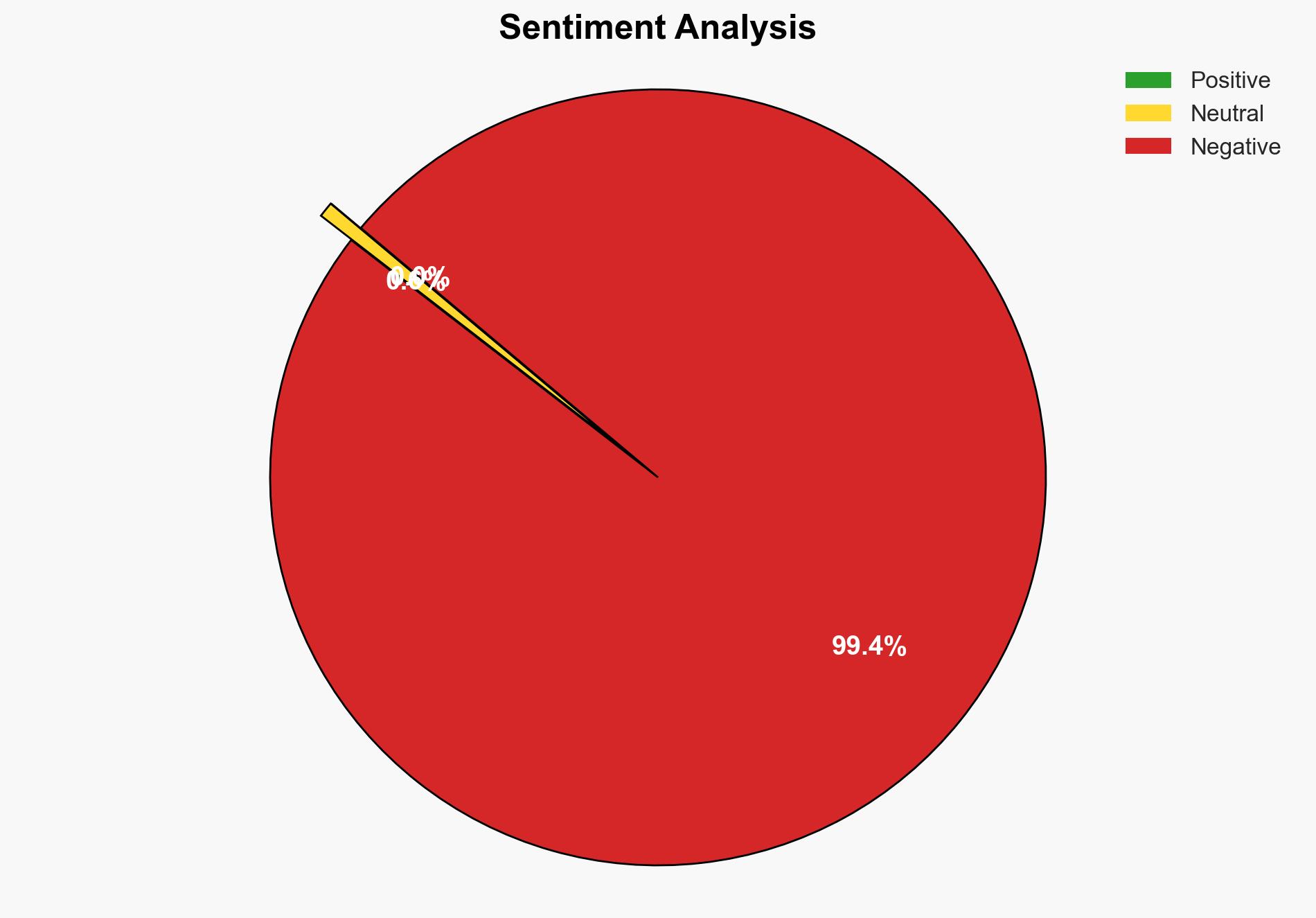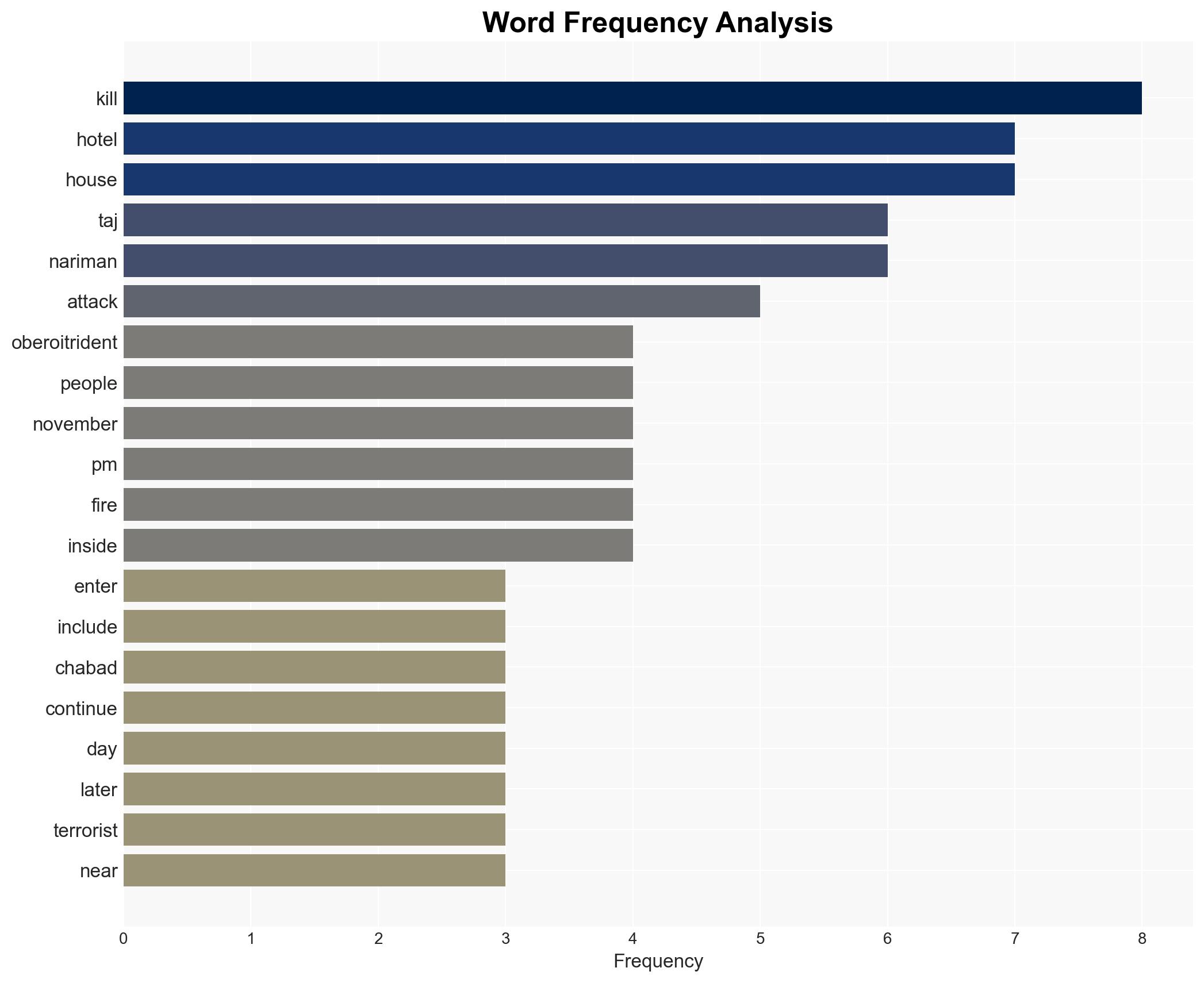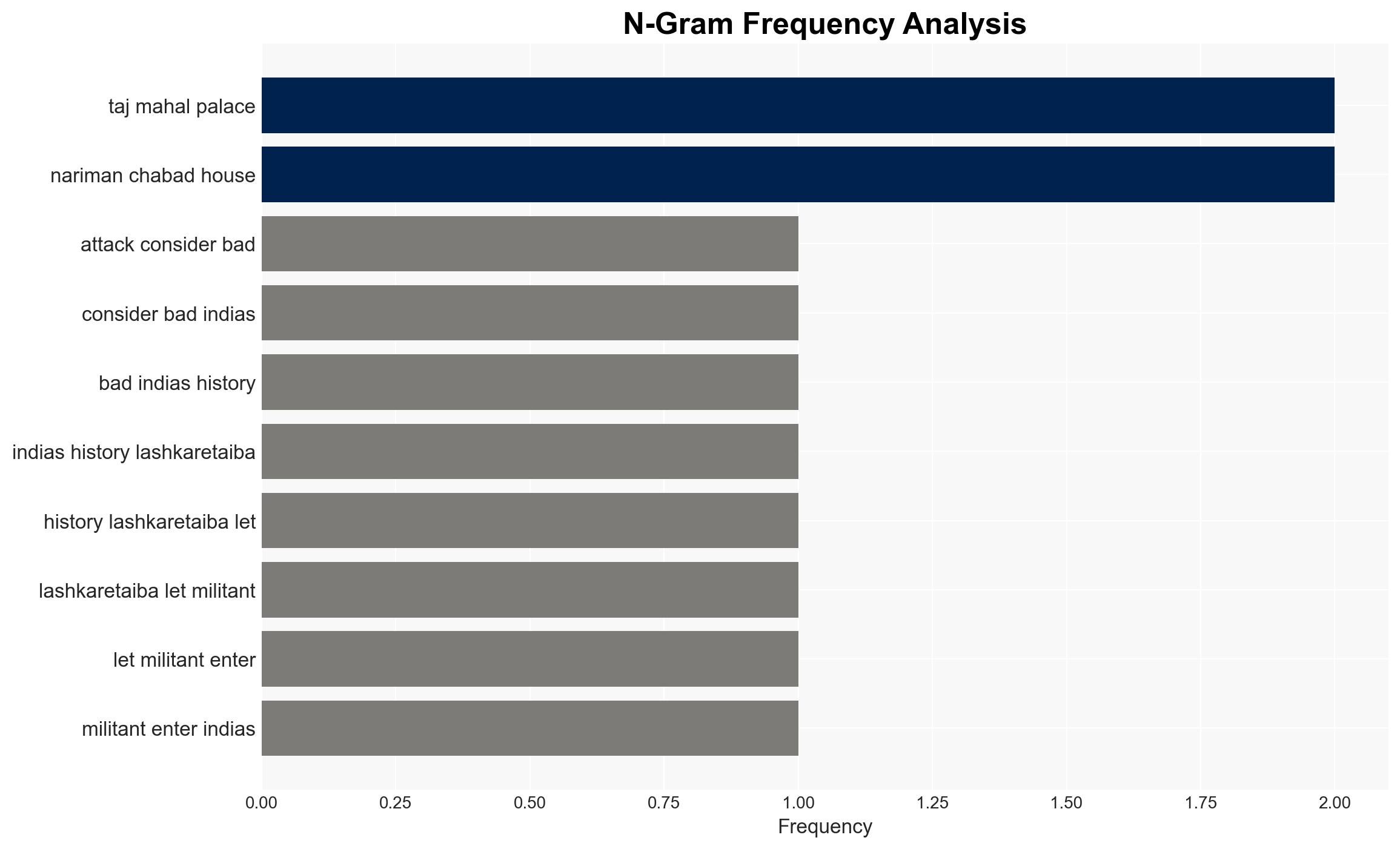Chronology of the 2008 Mumbai Attacks: A Four-Day Siege on India’s Financial Hub
Published on: 2025-11-26
AI-powered OSINT brief from verified open sources. Automated NLP signal extraction with human verification. See our Methodology and Why WorldWideWatchers.
Intelligence Report:
1. BLUF (Bottom Line Up Front)
The 2008 Mumbai attacks, orchestrated by Lashkar-e-Taiba, highlight significant vulnerabilities in India’s counter-terrorism preparedness. The most supported hypothesis is that the attacks were a calculated effort by Lashkar-e-Taiba to destabilize India and provoke a geopolitical crisis. Confidence level: High. Recommended action includes bolstering regional intelligence-sharing frameworks, enhancing maritime security, and strengthening internal counter-terrorism capabilities.
2. Competing Hypotheses
Hypothesis 1: The attacks were primarily intended to destabilize India’s financial hub and provoke a severe internal security crisis, thereby undermining India’s economic and political stability.
Hypothesis 2: The attacks aimed to escalate tensions between India and Pakistan, potentially inciting military conflict and drawing international attention to the Kashmir issue.
Hypothesis 1 is more likely given the choice of high-profile targets in Mumbai, a financial and cultural center, and the immediate political repercussions within India. Hypothesis 2 is plausible but less supported by the immediate outcomes and lack of direct military escalation.
3. Key Assumptions and Red Flags
Assumptions: Lashkar-e-Taiba had the operational capability and intent to execute such a complex attack. Indian intelligence and security forces were unprepared for a multi-location urban assault.
Red Flags: Potential underestimation of Lashkar-e-Taiba’s capabilities by Indian authorities. Possible intelligence failures or lack of inter-agency coordination.
Deception Indicators: The attackers’ use of maritime routes suggests sophisticated planning and possible external support or oversight.
4. Implications and Strategic Risks
The attacks exposed significant gaps in India’s counter-terrorism framework, potentially emboldening other terrorist groups. There is a risk of similar future attacks if systemic vulnerabilities are not addressed. The geopolitical tension between India and Pakistan remains a critical concern, with potential for escalation into broader conflict.
5. Recommendations and Outlook
- Enhance maritime and coastal security to prevent similar infiltration attempts.
- Strengthen intelligence-sharing mechanisms with regional and global partners.
- Invest in counter-terrorism training and infrastructure to improve rapid response capabilities.
- Best-case scenario: Successful implementation of counter-terrorism measures reduces risk of future attacks.
- Worst-case scenario: Failure to address vulnerabilities leads to repeated attacks, escalating regional tensions.
- Most-likely scenario: Incremental improvements in security measures and intelligence cooperation mitigate immediate risks but require sustained effort to address underlying issues.
6. Key Individuals and Entities
Mohammed Ajmal Amir Qasab (lone surviving attacker), Lashkar-e-Taiba (perpetrating organization).
7. Thematic Tags
Structured Analytic Techniques Applied
- ACH 2.0: Reconstruct likely threat actor intentions via hypothesis testing and structured refutation.
- Indicators Development: Track radicalization signals and propaganda patterns to anticipate operational planning.
- Narrative Pattern Analysis: Analyze spread/adaptation of ideological narratives for recruitment/incitement signals.
Explore more:
Counter-Terrorism Briefs ·
Daily Summary ·
Support us





